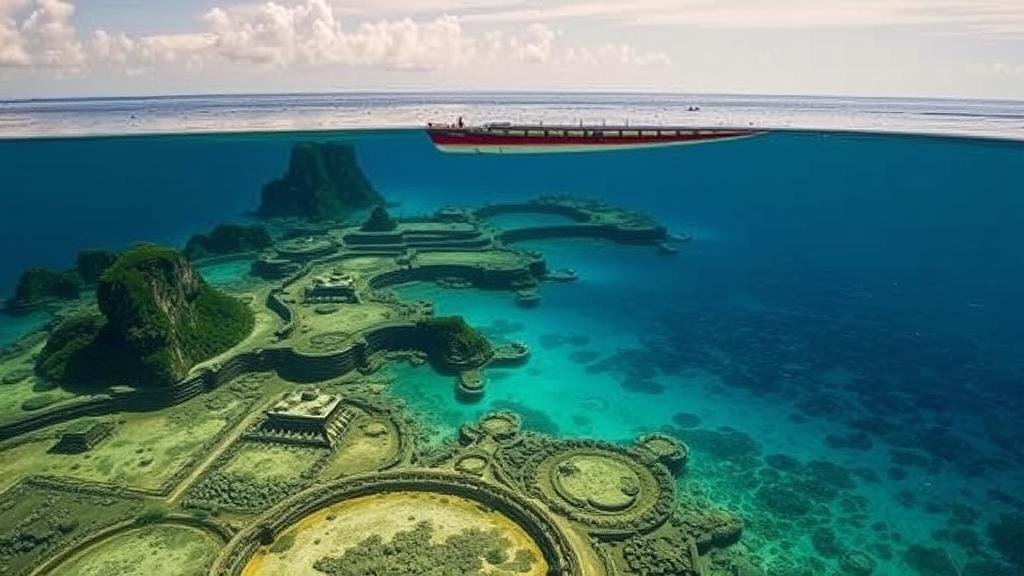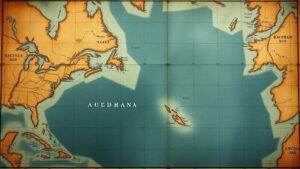Searching for evidence of ancient settlements on the now-sunken Sunda Shelf in Southeast Asia.
Searching for Evidence of Ancient Settlements on the Now-Sunken Sunda Shelf in Southeast Asia
The Sunda Shelf, a submerged landform located off the southern coast of Southeast Asia, is home to an array of potential archaeological treasures. As water levels rose during the last Ice Age, vast regions of this shelf were submerged, erasing evidence of prehistoric human habitation. This article explores the ongoing efforts to uncover the secrets of ancient settlements on the Sunda Shelf and what these discoveries might mean for our understanding of early human migration and civilization.
The Sunda Shelf: A Geographic Overview
The Sunda Shelf extends from the southeastern tip of the Asian continent to the Indonesian archipelago. Covering an area of approximately 1.5 million square kilometers, it was once a vast and fertile landscape during the last glacial maximum around 20,000 years ago. At that time, the sea levels were significantly lower, exposing land that would later become todays islands of Borneo, Sumatra, and Java.
This area is not only significant geographically but also culturally. It is believed to have played a crucial role in the migration of early Homo sapiens out of Africa and into Australia and the Pacific Islands.
Archaeological Evidence: What Have We Found So Far?
Researchers have employed various scientific techniques to study the Sunda Shelf, including underwater archaeology, remote sensing, and sediment core sampling. Several significant findings offer glimpses into the lives of those who inhabited the region.
- Underwater Stone Tools: In 2004, French archaeologists discovered stone tools near the island of Bintan, suggesting human activity dated back approximately 30,000 years.
- Ancient Coastlines: Using sonar mapping, scientists have identified submerged ancient coastlines that may have once supported thriving communities and rich ecosystems.
- Paleoenvironmental Studies: Analyses of sediment cores from the seabed have revealed pollen and other organic materials that indicate forested landscapes, providing evidence of how early humans interacted with their environment.
Significance of Findings: Understanding Human Migration
The evidence gathered from the Sunda Shelf is pivotal in understanding the migration patterns of early humans. The findings suggest that as sea levels rose, communities migrated to higher grounds or adapted to changing environmental conditions. Notably, genetic studies have indicated that some indigenous populations of the Pacific Islands and Australia share ancestral links with those who lived on the Sunda Shelf.
For example, the discovery of ancient fishing tools indicates that these early settlers were skilled in maritime navigation, which supports theories of long-distance travel and trade amid these evolving coastal environments.
Challenges in Researching Submerged Landscapes
Searching for evidence of ancient settlements on the Sunda Shelf is not without its challenges:
- Hydrological Changes: The dynamic nature of underwater landscapes makes it complicated to pinpoint exact sites where artifacts may reside.
- Technological Limitations: The use of advanced technology, such as autonomous underwater vehicles (AUVs), is crucial, yet expensive and not always available.
- Environmental Factors: Strong currents and sedimentation can obscure important archaeological sites, making them difficult to locate and excavate.
Real-World Applications and Future Research Directions
As interest in the Sunda Shelf grows, this research extends beyond academic curiosity. It carries implications for modern-day issues such as climate change, environmental sustainability, and heritage preservation. Understanding how ancient populations adapted to their changing environment may provide valuable lessons for contemporary societies faced with similar challenges.
Future research efforts aim to:
- Use advanced remote sensing techniques to better identify submerged sites.
- Engage local communities in conservation and heritage management efforts.
- Collaborate internationally to foster multidisciplinary approaches that include anthropology, geology, and climate science.
Conclusion: A Land of Lost Histories
The submerged landscapes of the Sunda Shelf undoubtedly hold clues to some of humanitys earliest settlements. As ongoing research continues to unveil the rich history of this area, we gain a deeper understanding of how early humans adapted to their environments and migrated across the globe. Ultimately, as we search for evidence beneath the waves, we not only uncover lost histories but also cultivate a greater appreciation for the resilience and ingenuity of our ancestors.



